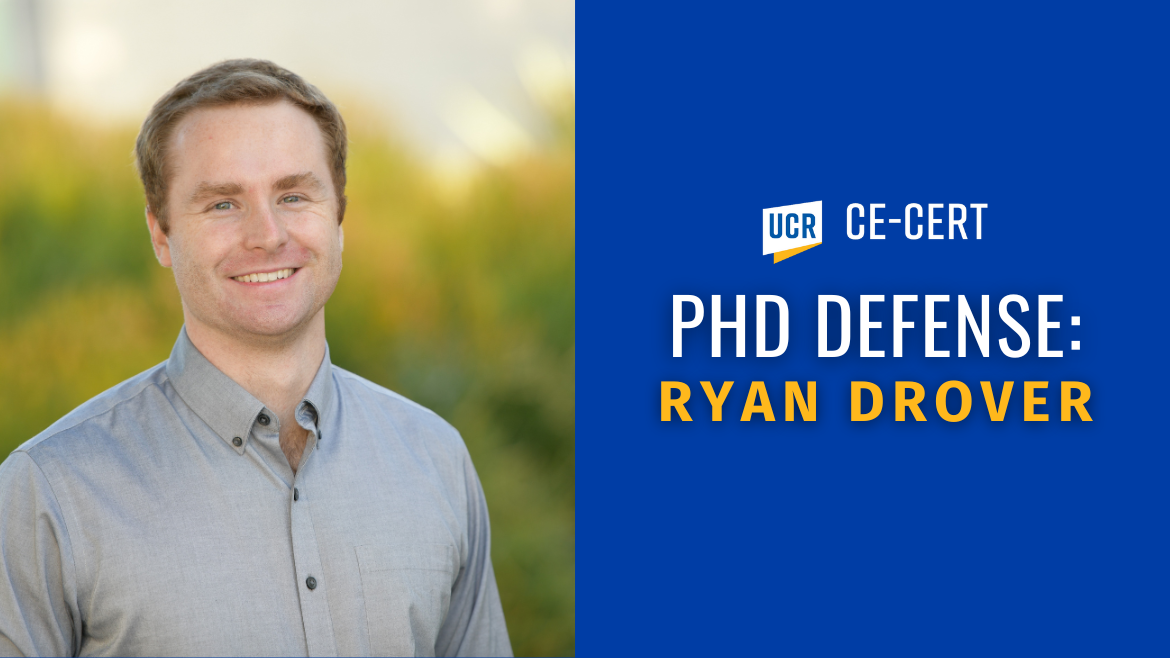
Join us for a presentation and defense by Ryan Drover, as he defends his Ph.D. thesis at the Center for Environmental Research and Technology (CE-CERT). Let's come together to support Ryan in this significant milestone of his academic journey.
Time: 04/09/2024 (Tuesday) 1:00 pm
Location: CE-CERT room 105
Name: Ryan Drover
Title: Bridging Traditional Understandings of Aerosol Dynamics to Real-World Maritime Emissions and Respiratory Health Delivery Methods
Abstract: Advancements in air quality research and the demand for more accurate environmental health assessments have highlighted the need for methodologies that bridge the gap between laboratory findings and real-world conditions. This dissertation includes a retrospective of maritime emissions, utilizes complete vessel operational and emissions parameters on active container ships, and provides evaluation to establish a novel aerosol delivery method for health studies, collectively aiming to enhance the management of air pollution and its health implications.
A major global fuel consumer and emissions source, maritime shipping has been historically understudied, and so emissions controls and policy have been misapplied. A historic technical review was conducted, utilizing an extensive internal dataset to develop new insights into the emissions profile of ocean-going vessels (OGVs). This analysis provides insight into the pollutants released by these ships across decades of regulatory changes and yields operational insights, suggesting pathways for more effective regulatory strategies.
In the subsequent chapter, this work applies GPS monitoring on active container ships, combined with in-use engine operational data and emissions testing, to develop an understanding of how vessel operations modify the contributions to air pollution. This approach offers a significant advancement over traditional engine load-based emission estimations, providing guidance to improve the accounting of emissions in real-time and historically, under real-world operating conditions, and identifying areas of regulatory oversight. This granularity enables the identification of specific maneuvers and activities, particularly in sensitive areas, that disproportionately affect emission levels.
The final chapter evaluates a recently introduced method for aerosol delivery in biomedical studies, designed to mimic real-world respiratory exposure to pollutants more accurately than traditional laboratory techniques. In simulating representative conditions under which subjects are exposed to aerosols, the physical deposition of particles in the lung and the resulting inflammatory response enable a clearly quantified improvement in methodology.